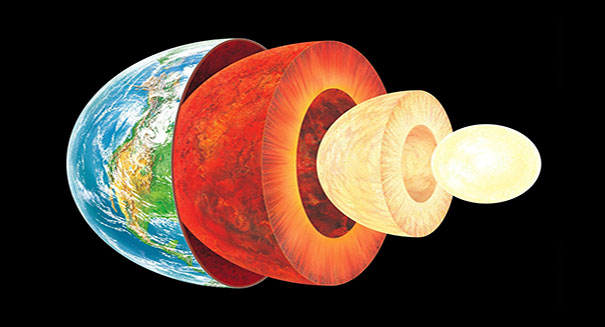
Earth's layers didn't always look like the ones we understand today
Even the average middle school student is familiar with Earth’s crust and plate tectonics: Seven (or eight, depending on how they’re defined) tectonic plates move in a largely lateral fashion along Earth’s mantle, with oceanic lithosphere getting recycled in subduction zones where the plates meet. Apparently, that wasn’t always the case. According to researchers at Johannes Gutenberg University Mainz (JGU), Earth’s crust was so dense in the Archean eon that it would have descended vertically, in “drip” form.
It’s believed that this was the case because in the Archean eon, which began around four billion years ago, mantle temperatures were much higher than they are now. Due to the higher temperatures, crust that formed during that time would have been incredibly thick and also rich in magnesium. Because so little of that crust survives today, it’s assumed that it was recycled into the mantle in the aforementioned vertical descending process, called “delamination.” In turn, when examining what examples have survived, the researchers conclude that these pieces cannot be the product of an originally magnesium-rich primary crust.
In a project led by Professor Richard White of the Institute of Geosciences at JGU, Dr. Tim Johnson and his collaborators at the US-American universities of Maryland, Southern California and Yale used thermodynamic calculations to conclude that mineral assemblages at the base of a 45-kilometer-thick magnesium-rich crust were even denser than the underlying mantle layer.
The findings add to our understanding of how cratons and plate tectonics, and thus also Earth’s current continents, came into being.
Leave a Reply